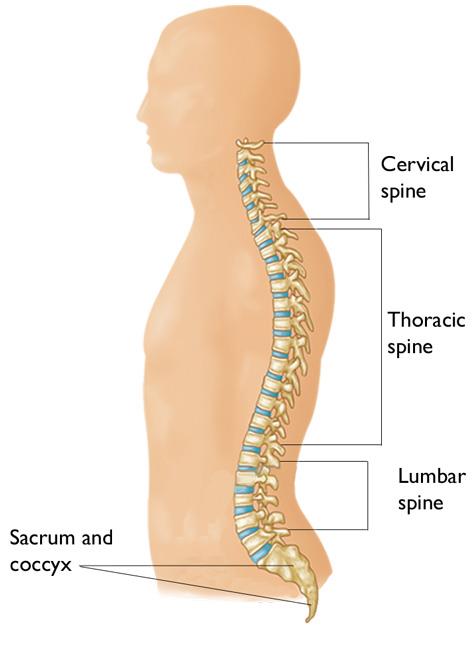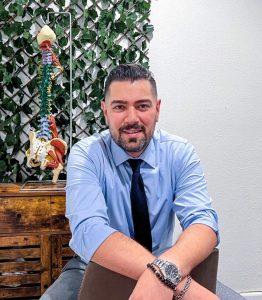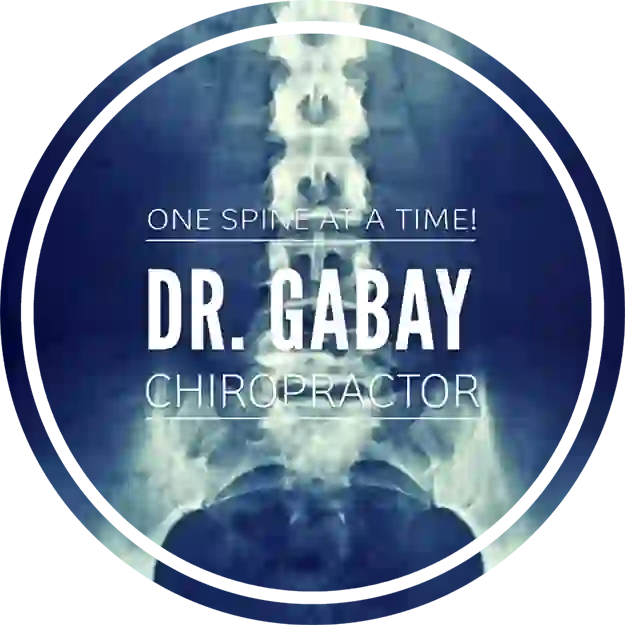What is radiculopathy and what can chiropractic do for it?
Radiculopathy is a disorder of the nerve root due to its irritation or compression. Symptoms include pain, numbness and tingling radiating from the back into the extremity. The underlying cause may be stenosis (narrowing), herniated disc, spondylolisthesis (slipped vertebrae), facet arthropathy, or some other condition that impinges upon the nerve root.
Chiropractic treatment has been shown to help alleviate these symptoms, as well as improve quality of life for patients with radiculopathy.
If you are suffering from any of the following symptoms, it may be time to see a chiropractor.
- Chronic neck or shoulder pain
- Burning, tingling sensations in the limbs
- Low back pain worsened by prolonged standing
- Sudden weakness of muscles or difficulty with coordination, balance or walking
- Difficulty with bowel and/or bladder control
- Intense pain when performing certain movements, such as turning your head to look to the side
Causes and Condition of Radiculopathy
Radiculopathy is a problem that can have many causes. Some people get it because they have a spinal injury or trauma. Others get it because they have a condition that affects their spine. This can cause the nerves in the spine to be squished, which leads to the radiculopathy.
Some of the most common causes of radiculopathy include:

- Disc herniation
- Degenerative disc disease
- Sciatica
- Bone spurs
- Spinal tumors
- Osteoarthritis
- Spinal stenosis
- Spondylolisthesis
- Compression fractures
- Diabetes
- Cauda equina syndrome
- Scoliosis
The spinal discs are important for keeping the spine healthy and working well. If a disc is damaged, for example if it bulges, herniates, or degenerates, it can affect the nerves around it.
Bone spurs can grow abnormally and invade nerve space, leading to radiculopathy.
Spinal tumors and conditions like osteoarthritis can cause problems with the nerves in the spine, as well as weaken the vertebrae. This can lead to compression fractures, or breaks in the bones of the spine.
If the spaces within the spine become narrower, it can cause pressure on the nerves. This is called spinal stenosis. This can lead to a condition called radiculopathy, which is when you feel pain, tingling, or numbness in your arms or legs.
Diabetic neuropathy is a type of nerve damage that can be caused by high blood sugar and poor circulation. This damage can injure the nerves, most commonly in the legs and feet.
Structural spinal conditions like scoliosis are linked to radiculopathy. This happens when the spine curves in an unnatural way, which puts a lot of uneven forces on the body, particularly the spine and its surrounding ligaments, muscles, and nerves.
Some factors that increase the risk of developing radiculopathy include age-related spinal degeneration, obesity, chronic poor posture, repeatedly lifting heavy objects incorrectly that lead to uneven wear and strain, overuse injuries, and/or a genetic predisposition to degenerative bone conditions like osteoarthritis and osteoporosis.
What are the symptoms of radiculopathy? This is a question we will now discuss. Radiculopathy has many possible causes, but some of its most common sources are disc herniation, spinal stenosis, and spondylolisthesis.
There are a variety of causes of radiculopathy, including but not limited to:
Radiculopathy Symptoms
There are many different ways that nerve-related conditions can affect the body. The way the condition affects a person depends on things like their age, how healthy they are overall, where in their body the nerve is affected, and how severe the condition is.
The location of the compression in the spine is a major factor in how symptoms will vary.
There are different sections of the spine, and each section has its own set of nerves. Each type of radiculopathy is related to the location of the affected nerve.
Cervical Radiculopathy
The cervical spine is the part of the spine that runs from the base of your head to your shoulders. It has seven vertebrae (C1-C7).
Cervical radiculopathy is a condition that can be caused by compression of a nerve in the neck or upper back. The severity of the condition can vary from one person to the next, but common symptoms include:
- Neck pain
- Shoulder pain
- Upper back pain
- Arm pain
- Weakness and/or numbness, often on one side of the body, can be a sign of a stroke.
Thoracic Radiculopathy
The thoracic region is the longest and most complex section of the spine. It has 12 vertebrae (T1-T12). This part of the spine connects the cervical spine above to the lumbar spine below.
The thoracic spine is the spinal section that extends from the base of the neck to the abdomen. It is the only spinal section that attaches to the ribcage.
If nerve compression or irritation occurs in the middle/upper back region, common symptoms can include:
- Chest pain can be a sign of many things, some serious and some not. It’s important to get checked out by a doctor to find out the cause if you’re experiencing chest pain, especially if it’s new or doesn’t go away.
- Back pain
- If you experience burning or shooting pain in your rib cage, sides, and/or abdomen, it is important to seek medical attention as soon as possible.
- You may experience numbness and/or tingling in the back and affected areas. This is usually a sign that you have injured your spine.
Lumbar Radiculopathy
The lumbar spine is the part of the spine that curves inward. It is in the lower back. The lumbar spine helps to hold up our weight.
The lumbar spine is very strong and protects the spinal cord. It’s also very flexible, which allows for movement in different directions: extension, flexion, side bending, and rotation.
When a nerve is compressed and/or irritated in the lower back, it can cause a number of symptoms, including problems with the lower body.
Symptoms of lumbar radiculopathy can often worsen during long periods of sitting or standing. They may include pain, tingling, or numbness in the lower back, legs, or feet.
- Buttocks pain
- Changes to sensation and reflex
- Foot pain
- Hip pain
- Leg pain
- Lower back pain
- Numbness and/or tingling in the back or leg
- Numbness and/or weakness in the leg and foot
- Sciatic nerve pain
In some cases, lumbar radiculopathy can cause bowel and bladder incontinence and a loss of control.
Sciatica is a type of back pain that comes from the sciatic nerve. This nerve is the largest one in your body and it starts in your lower back.
Sleep problems can be a symptom of radiculopathy. This is a condition that affects the nerves. Let’s talk about this topic, which is common among people with this condition.
Is it possible to avoid radiculopathy?
Spine health tips
- Keep good posture when you are sitting down. Make sure to have both feet on the ground. Do not slouch.
- When you are picking something up, lift it with your knees, not your back. This will help you avoid getting a back injury.
- If you are doing work that is repetitive, take breaks often. This will help you to avoid getting too tired and making mistakes.
- When you’re looking for shoes, try to find ones with good arch support. This will help your feet feel better. You should also avoid wearing high heels for too long, as this can be bad for your feet.
- You can stay healthy and fit by incorporating exercise into your daily routine. Exercise can help protect your spine.
How chiropractic care can help reduce pain and improve function in patients with radiculopathy
One study found that patients who received chiropractic treatment showed significant improvement in their symptoms and quality of life. Patients reported less pain and improved function after treatment. Chiropractic care can help reduce inflammation and improve nerve function, which can help improve symptoms.
The benefits of chiropractic care for patients with this condition
Chiropractic care can help reduce inflammation and improve nerve function, which can help improve symptoms. Some of the benefits of chiropractic care for patients with this condition include:
- improvement in symptoms
- less pain
- improved function
- better quality of life
Chiropractic care has been shown to be an effective treatment for radiculopathy. Patients who receive chiropractic care report less pain and improved function. Chiropractic care can help reduce inflammation and improve nerve function, which can help improve symptoms. When you see a chiropractor for treatment of this condition, they will likely assess your symptoms and perform a physical examination. Treatment may include spinal manipulation, mobilization, and other hands-on therapies. Rehabilitation exercises may also be prescribed to help improve function and reduce pain. If you are suffering from radiculopathy, chiropractic care may be the right treatment for you.

We provide quality chiropractic treatment for radiculopathy near you in the Encino area.
Dr. Nariman M. Gabay, a leading chiropractor in Encino and skilled at specializing radiculopathy treatments! We have the solution for your chronic pain with proven results without surgery or drugs.
If you’re experiencing any of the symptoms of radiculopathy, please call our office today and book an appointment. We may be able to help you reduce your pain and improve your quality of life.
